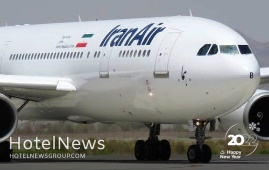
Pakistan International Airlines (PIA) has resumed direct flights to Iran’s Mashhad, after a five-year gap to develop people-to-people contacts, local media reported on Thursday. The development took place following the serious efforts of the Iranian Embassy in Islamabad to facilitate air travel between the two neighboring countries and to boost the tourism industry. Earlier this month, Chief Executive of PIA Air Marshal Arshad Malik during a meeting with Ambassador of Iran to Pakistan Mohammad Ali Hosseini had announced that the PIA is going to start direct flights from Lahore to Mashhad, Asian News International reported. Ambassador Hosseini in a tweet had also revealed that Iran and Pakistan had agreed on increasing efforts to promote air cooperation between Iran and Pakistan. In this regard, PIA is going to begin direct flights from Karachi to Mashhad on Jan 1, 2022. Iran Air operates one weekly flight from Tehran to Karachi and vice versa, and there are reports that Mahan Iran Airlines will resume flights from Tehran and Mashhad to Lahore. Mashhad is Iran’s holiest and second-largest city. Its raison d’être is the striking shrine complex of the eighth Shia Imam (AS) that is encircled by dozens of five-star hotels and many other accommodation centers.
Create: Jan 1, 2022 Edit: Jan 1, 2022 Regional News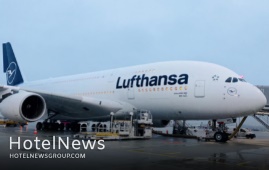
Updating the list of countries that are highly affected by the COVID-19 disease, the German authorities have announced that Iran and four other countries will be removed from the high-risk list on Sunday, December 12. The new update of lists has been published by the Robert Koch Institute (RKI), which is Germany’s responsible body for disease prevention and control. According to the announcement, Iran, Armenia, Mongolia, the Philippines, and Romania who have been fully vaccinated or recovered from the COVID-19 will no longer be part of the high-risk list, according to Schengen Visa. Moreover, travelers from the cited countries will also be released from the quarantine requirement. On the other hand, strict entry rules will continue to apply to unvaccinated and unrecovered travelers who reach Germany from one of the countries that are to be removed from the high-risk list. They can enter Germany only for absolutely essential purposes provided that they follow entry rules, such as testing and quarantine requirements, the report said. Furthermore, In regards to Germany’s high-risk list, no new countries have been added to it. Still, the list currently includes Switzerland, Poland, Liechtenstein, and several other EU/Schengen Area countries such as Croatia, Belgium, Greece, Latvia, Lithuania, Austria, Slovakia, Slovenia, Czechia, and Hungary. All travelers from a high-risk area need to fill in a digital entry form. Moreover, those who haven’t been vaccinated or recovered from the virus must stay self-isolated for ten days upon their arrival in Germany. “Travelers who have previously stayed in a high-risk area must have a test, vaccination, or recovery certificate with them and, if a carrier is used, present the proof for the transport,” the authorities explained. Similar to the high-risk list, Germany’s virus variant areas list has also remained unchanged. Currently, the virus variant list includes Botswana, Eswatini, Lesotho Malawi, Mozambique, Namibia, Zimbabwe, and South Africa. Beforehand, the German leaders agreed to impose stricter restrictions to prevent the further spread of the COVID-19 and its new variant.
Create: Dec 12, 2021 Edit: Dec 12, 2021 International News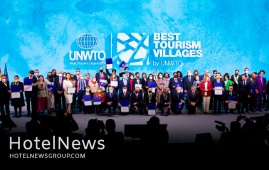
The best examples of villages embracing tourism to provide opportunity and drive sustainable development have been celebrated at the World Tourism Organization (UNWTO) General Assembly in Madrid. The Best Tourism Villages by UNWTO initiative was launched to advance the role of tourism in safeguarding rural villages, along with their landscapes, natural and cultural diversity, and their local values and activities, including local gastronomy. A total of 44 villages from 32 countries across the five world regions were granted the recognition in 2021. All of them stand out for their natural and cultural resources as well as for their innovative and transformative actions and commitment to the development of tourism in line with the Sustainable Development Goals (SDGs). The villages were evaluated by an independent Advisory Board based on a set of criteria covering nine areas: - Cultural and Natural Resources - Promotion and Conservation of Cultural Resources - Economic Sustainability - Social Sustainability - Environmental Sustainability - Tourism Potential and Development and Value Chain Integration - Governance and Prioritization of Tourism - Infrastructure and Connectivity - Health, Safety and Security All of the 44 chosen villages scored a total of 80 or more points or more out of a possible 100. Tourism as a driver of rural development and inclusion “Tourism can be a driver of social cohesion and inclusion by promoting a fairer distribution of benefits throughout the territory and empowering local communities,” says UNWTO Secretary-General Zurab Pololikashvili. “This initiative recognizes those villages committed to making tourism a strong driver of their development and wellbeing”. The Best Tourism Villages by UNWTO initiative includes three pillars: The ‘Best Tourism Villages by UNWTO’: Recognizes villages which are an outstanding example of a rural tourism destination with recognized cultural and natural assets, that preserve and promote rural and community-based values, products and lifestyle and have a clear commitment to innovation and sustainability in all its aspects – economic, social and environmental. The ‘Best Tourism Villages by UNWTO’ Upgrade Programme: The Upgrade programme will benefit a number of villages that do not fully meet the criteria to receive the recognition. These villages will receive support from UNWTO and its Partners in improving elements of the areas identified as gaps in the evaluation process. The ‘Best Tourism Villages by UNWTO’ Network: The Network will provide a space for exchanging experiences and good practices, learnings, and opportunities. It will include representatives of the villages recognized as the ‘Best Tourism Village by UNWTO’ , the villages participating in the Upgrade Programme, as well as experts, public and private sector partners engaged in the promotion of tourism for rural development. A total 174 villages were proposed by 75 UNWTO Member States (each Member State could present a maximum of three villages) for the 2021 pilot initiative. Among which 44 were recognized as Best Tourism Villages by UNWTO. Another 20 villages will enter the Upgrade Programme of the Initiative. All 64 villages enter to make part of the UNWTO Best Tourism Villages Network. The next edition will open in February 2022. List of Best Tourism Villages by UNWTO 2021: Bekhovo, Russian Federation Bkassine, Lebanon Bojo, Philippineshe Caspalá, Argentina Castelo Rodrigo, Portugal Cuetzalan del Progreso, Mexico Cumeada, Portugal Gruyères, Switzerland Batu Puteh , Malaysia Kaunertal, Austria Le Morne, Mauritius Lekunberri, Spain Maní, Mexico Misfat Al Abriyeen, Oman Miyama, Japan Mokra Gora, Serbia Morella, Spain Mustafapaşa, Turkey Nglanggeran, Indonesia Niseko, Japan Nkotsi Village, Rwanda Old Grand Port, Mauritius Olergesailie, Kenya Ollantaytambo, Peru Pano Lefkara, Cyprus Pica, Chile Pochampally, India Puerto Williams, Chile Radovljica, Slovenia Rijal Alma'a, Kingdom of Saudi Arabia Testo Alto, Brazil Saas Fee, Switzerland San Cosme y Damián, Paraguay San Ginesio, Italy Sidi Kaouki, Morocco Solčava, Slovenia Soufli, Greece Taraklı, Turkey The Purple Island, Republic of Korea Ungok Village, Republic of Korea Valposchiavo, Switzerland Wonchi, Ethiopia Xidi, China Yucun, China Additionally, UNWTO will work with the following villages participating in the Upgrade Programme: Ordino, Andorra Khinalig, Azerbaijan Koprivshtitsa, Bulgaria Kaštelir Labinci, Croatia Agros, Cyprus Fuwah, Egypt Western Samos, Greece Hollókő, Hungary Biei, Japan Capulálpam de Méndez, Mexico Godinje, Montenegro Gornja Lastva, Montenegro Oukaimeden, Morocco Barangay Tenani, Philippines Gasura, Rwanda Gostilje, Serbia Gorenja Vas, Slovenia Cantavieja, Spain Bo Suak, Thailand Ruboni, Uganda
Create: Dec 5, 2021 Edit: Dec 5, 2021 International News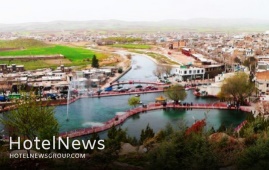
Nine tourism-related projects, which are planned to be carried out across the western province of Kermanshah are estimated to generate 135 jobs upon their completion, the provincial tourism chief has announced. The projects will be implemented in the cities of Kermanshah, Javanrud, Harsin, and Islamabad-e-Gharb, Jabbar Gohari said on Tuesday. A budget of 2.4 trillion rials ($58.4 million at the official exchange rate of 42,000 rials per dollar) will be channeled into the projects, which include accommodation centers, tourist complexes, traditional restaurants, and hotel hospitals, the official explained. Kermanshah embraces a variety of awe-inspiring historical sites, of which Bisotun and Taq-e Bostan are both on the UNESCO World Heritage list. Inscribed into the base of a towering cliff, Taq-e Bostan comprises extraordinary Sassanian bas-reliefs of ancient victorious kings divide opinions. Late afternoon is the best time to visit, as the cliff turns a brilliant orange in the setting sun, which then dies poetically on the far side of the duck pond. Bisotun is a patchwork of immense yet impressive life-size carvings depicting King Darius I and several other figures. UNESCO has it that Bisotun bears outstanding testimony to the important interchange of human values on the development of monumental art and writing, reflecting ancient traditions in monumental bas-reliefs.
Create: Nov 20, 2021 Edit: Nov 20, 2021 Regional News
The Federal Communications Commission has authorized a satellite internet project from Boeing first proposed in 2017. Boeing can now move forward with building, launching, and operating its own broadband internet network from space, joining its main aerospace competitor SpaceX. Boeing’s plan involves placing 132 satellites into low Earth orbit at an altitude of 1,056 kilometers (about 656 miles). Another 15 will be launched to “non geostationary orbit” at an altitude between 27,355 and 44,221 km (16,998 to 27,478 miles). The company says it wants to use the satellites to offer “broadband internet and communications services to residential consumers, government and business users in the United States, Puerto Rico and the US Virgin Islands” while the network gets built out, and on a global basis once it’s complete. All 147 satellites would broadcast in the V-band, a higher-frequency slice of the wireless spectrum than the Ka and Ku bands used by SpaceX’s Starlink network or Amazon’s yet-to-be-deployed Project Kuiper satellites. Using V-band could allow for faster data transfer rates but runs a greater risk of interference because the higher frequencies have more trouble penetrating solid objects. (SpaceX has plans to use the V-band in some future satellites, and so does OneWeb. The Ka and Ku bands are also used by satellites that provide in-flight internet on commercial airlines.) SPACEX HAD TOLD THE FCC IT WAS CONCERNED BOEING’S NETWORK WOULD CROWD LOW EARTH ORBIT SpaceX has previously expressed concern that Boeing’s proposal to launch into already-crowded low orbits could increase the risk of a collision with other satellites. In 2019, SpaceX said to the FCC that it believed Boeing’s network would create a “clear danger of harmful interference,” according to Reuters. SpaceX’s Starlink satellites orbit the Earth at an altitude of around 550 km (roughly 342 miles), which is around where OneWeb’s internet satellite constellation can be found (and where Amazon’s satellites will go once they launch). SpaceX and OneWeb narrowly avoided a collision earlier this year. Boeing now has six years to launch half of its satellite constellation and nine years to deploy the entire network. The company had asked the FCC to loosen those requirements — it wanted to only commit to launching five satellites in the first six years, and asked for a 12-year window to launch the entire constellation — but the commission denied that request, according to the order published Wednesday. By comparison, SpaceX and Amazon have far grander plans for their networks, with each consisting of thousands of satellites. Boeing is a major satellite manufacturer, and so it spent the years before and after its initial 2017 proposal selling to early space-based internet providers as the market matured. But providers are now expected to collectively generate more than $50 billion by 2031, which could explain why Boeing bothered slogging through four years of the approval process.
Create: Nov 5, 2021 Edit: Nov 5, 2021 International News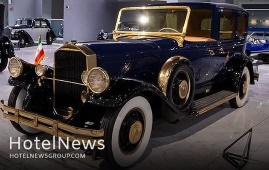
Following years of restoration and renovation, Iran Historical Car Museum in western Tehran has reopened its doors to the public, featuring a magnificent collection of rare classic, vintage, sports cars, carriages, and motorcycles.Highlights of the museum include a gold-plated limousine, the world’s only Panther-Laser car produced, a Silver Ghost Rolls-Royce once owned by the Qajar King, Ahmand Shah (r. 1909 – 1925), as well as a royal carriage belonging to Nasereddin Shah of Qajar.In an interview with the Tehran Times on Sunday, the director of the museum Mohammad Fa’al, said: “The 1922 Rolls-Royce, a Morris Oxford Bullnose, and a Fiat Tipo 519 constitute the three oldest cars of the collection.”“The building of the museum underwent restorations as of 2005 as you can see the images of the restoration of the building and cars have been installed on the walls of the museum. Moreover, we refurbished a dozen other cars from our treasury and added them to the newly-opened museum.”“The museum has four main halls, the first of which bears the oldest vehicles of the collection, amongst them the Rolls-Royce Silver Ghost that was belonging to Ahmad Shah Qajar,” he said. Hall 2 is dedicated to American and Mercedes-Benz vehicles, and Hall 3 is devoted to the official and ceremonial cars, which include various models of Rolls-Royces and Mercedes. Hall 4 is also dedicated to sports and super sports cars. In response to a question about the number of vehicles, the director said: “There are currently 102 cars in the treasury in addition to 55 cars that are currently on display.” “Of course, what you now see in here is not all our cars, and we have a treasury that acts as a support for the museum, and it has cars that are being renovated over time and replaced with these existing cars in order to preserve the charm of the museum.” The museum owns the largest collection of Mercedes-Benz 600 in the world. “We have the largest collection of Mercedes-Benz 600 in the world with 21 units. The Mercedes-Benz Museum itself has three units of the 600 model…. the Mercedes-Benz 600 itself is designed and built with different rooms and its function is only for ceremonies and this model has different rooms some having hardtop or custom-made sunroofs,” the director of the museum explained. He said that the museum owns all models of Mercedes-Benz 600, which is very unique. “Moreover, we have all models of Mercedes-Benz 600 that have been produced by the German company; four of which are on display here in the museum, and 17 are being kept inside the treasury.” Furthermore, Fa’al added 21 classic Rolls-Royces are being kept in the museum and its treasure trove. “Home to 21 [classic] Rolls-Royces, Iran Historical Car Museum is the second-largest treasure trove of those vehicles after the Rolls-Royce Museum.” Talking about the values of cars he explained, “all these cars are valuable and it is impossible to say which one is better. We can say which one is more beautiful and which has a more attractive design, but we cannot say which is more valuable.” “However, the classification of cars in terms of value depends on several factors: one is the age of the car, the other is its manufacturer brand and design technology. And there are decorative items used in cars. For instance, a car in which is gold plated and is decorated with jewelry is obviously more valuable than an ordinary one….” Responding to a question concerning restoration, Fa’al said all the processes of rebuilding cars are fully documented and all phases are photographed and evidence is available. The age of the classic cars According to Brinatica, the decade 1925–35 was notable not only for the appearance of many new small automobiles but also for the building of many ultra-large ones. The years from 1925 to 1948 are cited by collectors of automobiles as the “classic years,” a period that saw the rise of the luxurious fast motorcar to a peak it seems unlikely to reach again. The first name in this field was Rolls-Royce Ltd., founded in 1906. Most Rolls-Royce chassis are designed for limousine and large sedan bodies, but the firm once made a comparatively light car (called the Twenty), and it has throughout its history produced fast models in addition to its regular line—e.g., after World War II, the Continental, built under the Bentley Motors Ltd. label. Other motorcars of this type included the Hispano-Suiza of Spain and France; the Bugatti, Delage, Delahaye, Hotchkiss, Talbot (Darracq), and Voisin of France; the Duesenberg, Cadillac, Packard, and Pierce-Arrow of the United States; the Horch, Maybach, and Mercedes-Benz of Germany; the Belgian Minerva; and the Italian Isotta-Fraschini.
Create: Nov 3, 2021 Edit: Nov 3, 2021 Regional News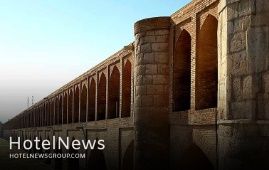
A selection of 200 “untold stories” about Isfahan is now available for you to re-discover the ancient city, which has long been nicknamed as “half the world”. Each story is narrated within a one-minute video clip in different languages to make culture lovers and avid travelers familiar with the off-the-beaten tracks, lesser-known destinations, souvenirs, foods, traditions, rituals, cultural heritage, handicrafts, and above all the hospitable people of Isfahan. Directed by Iranian globetrotter and researcher Majid Erfanian, the clips have been produced jointly by Isfahan Chamber of Commerce, Industries, Mines and Agriculture (ICCIMA), and the private company of Rah Abrisham Iranian Zamin. 100 of the videos, containing 100 fascinating stories, had already been uploaded to social media outlets, while the others were unveiled in an official ceremony hosted by the ICCIMA on Saturday evening. The event was attended by the deputy tourism minister Ali-Asghar Shalbafian, Isfahan governor-general Seyyed Reza Mortazavi, the mayor of Isfahan Ali Qasemzadeh, and Alireza Salarian, the head of Representative Office of Ministry of Foreign Affairs in Isfahan as well as a host of travel insiders, reporters, and journalists who discussed ways to jumpstart tourism. Erfanian stressed the need for greater public awareness about the cultural heritage of the ancient land, saying the “untold stories” are produced for that purpose. “Redefining destinations has rarely happened in the field of traveling [in the country], and now the city [of Isfahan] is a forerunner of such a trend to express its tourism brand in a new way,” he said. Talking about the clips, Erfanian said” “In these multi-language videos, we have tried to put the spotlight on inaccessible or lesser-known historical sites, foods, intangible heritage, people…. characters, craftsmen and figures who have played a role in shaping the identity of Isfahan.” “Sister cities of Isfahan, the diversity of religions, and intangible heritage are amongst other elements we have addressed in the videos,” he added. In an address to the unveiling ceremony, the deputy tourism minister used the context of modern architecture to discuss ways to highlight contemporary Isfahan shoulder to shoulder with its historical core. “We see in the videos that they mostly bring centuries-old architecture and culture into focus, however, we should consider casting a new light on the modern side of Isfahan as well.” “In the production of extra videos, newer ideas may be added to improve the quality of the work,” Shalbafian added. The governor-general of Isfahan reminded the attendees of the unique feature of stories and narratives, in general, to preserve cultural heritage for the coming generations. “In all over the world, paying attention to stories and narratives is of special importance for the development of tourism….. and we have many of such stories that have been forgotten in the course of history.” What you have done in this project is to revive such stories and distinct identities that if ignored, will lead to their disappearance, Mortazavi explained. Ali Karbasizadeh, a senior advisor to the ICCIMA, expressed the need for paying much more attention to the tourism industry, content production, training of all stakeholders and activists, conducting relevant studies, productive investments, tourism startups, and further cooperation with other provinces to develop the tourism paradigm of the country. Furthermore, Karbasizadeh discussed the advantage of adequate official holidays in Iran, saying the number of national holidays in Iran, which has a pivotal role in domestic tourism, is currently insufficient in comparison to many other countries. “If this issue is not addressed and solved, our efforts in other areas would not have desired results.” Salarian for his part noted that making one-minute videos of Isfahan is a good fit. “When we sent [some of the earliest] clips of the series to our embassies in various countries, they expressed a wish to have them translated into other languages as well….Now I see that this has happened.” “Even the municipality [of Isfahan] has produced a series of professional five-minute videos in ten languages that are well received by the audiences.” “Isfahan is one of the important destinations for the high-ranking Iranian officials and visiting officials from other countries. Therefore, it has a unique stance in the field of tourism that should be taken into account,” the senior diplomat explained. Finally, the mayor of Isfahan outlined the importance of storytelling for the time being and in various fields including tourism, saying: “Story [and storytelling] still works in the present day even in psychiatric discussions, story therapy is a growing concept.” “We are ready to expand cooperation and join hands with other activists in the realm of tourism because Isfahan has enormous potential to become a major destination for international travelers,” Qasemzadeh said. Half the world? Soaked in a rich history, Isfahan was once a crossroad of international trade and diplomacy in Iran and now it is one of Iran’s top tourist destinations for good reasons. It is filled with many architectural wonders such as unmatched Islamic buildings, bazaars, museums, Persian gardens, and tree-lined boulevards. It's a city for walking, getting lost in its mazing bazaars, dozing in beautiful gardens, and meeting people. Isfahan is renowned not only for the abundance of great historical bridges but also for its ‘life-giving river’, the Zayandeh-Rood, which has long bestowed the city an original beauty and fertility. Isfahan has long been nicknamed as Nesf-e-Jahan which is translated into “half the world”; meaning seeing it is relevant to see half the world. In its heyday, it was also one of the largest cities in the region with a population of nearly one million. The cool blue tiles of Isfahan's Islamic buildings, and the city's majestic bridges, contrast perfectly with the encircling hot, dry Iranian countryside. The huge Imam Square, best known as Naghsh-e Jahan Sq. (literary meaning “Image of the World”), is one of the largest in the world (500m by 160m), and a majestic example of town planning. Constructed in the early 17th century, the UNESCO-registered square is punctuated with the most interesting sights in Isfahan. It was laid out under the reign of the Safavid ruler, Shah Abbas the Great, to signal the importance of Isfahan as the capital of his powerful empire. It is hemmed on four sides by magnificent buildings: to the east, the Sheikh Lotfollah Mosque; to the west, the palace of Ali Qapu; to the north, the portico of Qeysarieh; and to the south, the eminent Imam Mosque. “The square was at the heart of the Safavid capital’s culture, economy, religion, social power, government, and politics. Its vast sandy esplanade was used for celebrations, promenades, and public executions, for playing polo and for assembling troops,” according to the UNESCO website. Right at the northern limit of the Imam Square, one will find “Qeysarieh Gate”, which leads to the unique and unforgettable “Grand Bazaar of Isfahan”. This vaulted marketplace is one of the largest and most labyrinthine bazaars in the country. Shops offering handicrafts, souvenirs, jewelry, silverware, traditional ceramics, and authentic Persian carpets. Modern Isfahan is now home to some heavy industry, including steel factories and a nuclear facility on its outskirts, however, its inner core wants to be preserved as a priceless gem. The city is also home to a gigantic, professional, and state-of-the-art healthcare city, which is a major destination in the realm of medical tourism. Unknown destination Even before the pandemic, Iran’s tourism was already grappling with some challenges, on top of those Western “media propaganda” aimed at scaring potential travelers away from the Islamic Republic. Some experts believe Iran is still somehow “unknown” for many potential travelers due to such a “media war”. They, however, consider bright prospects for the tourism sector of the country if it vigorously pursues comprehensive strategies to counter U.S.-led propaganda and strict sanctions, yet does its best to loosen tough travel regulations.
Create: Oct 26, 2021 Edit: Oct 27, 2021 Regional News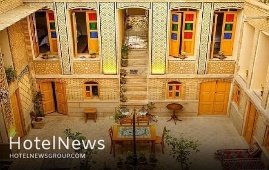
Over 11,000 job opportunities are estimated to be generated by implementing 245 tourism-related projects across the northeastern Khorasan Razavi province, the deputy provincial tourism chief has announced. Upon the completion of the ongoing projects that have been underway for about ten years, a total of 11,500 jobs will be provided for the locals, CHTN quoted Ahmad Dinari as saying on Sunday. Some 500 trillion rials (about $12 billion at the official exchange rate of 42,000 rials per dollar) have been invested in the mentioned projects so far, the official added. The projects include hotels, apartment hotels, guesthouses, travel complexes, recreational centers, and villages specifically developed for health tourism, he noted. He also noted that foreign investment in the tourism sector of the province amounted to $90 million last year. Mashhad, the capital of Khorasan Razavi province, is Iran’s holiest and second-largest city. Its raison d’être and main sight is the striking massive shrine complex of Imam Reza (AS), the eighth Shia Imam Dozens of five-star hotels and hostels are dotted across Mashhad. The city has also the highest concentration of water parks in the country, and it also embraces a variety of cultural and historical sites that are generally crowded. The metropolis is also a good place to buy top handwoven rugs and carpets, and it’s a staging post for travel to Turkmenistan, Afghanistan, and little-touristic Khorasan regions. Before the coronavirus puts almost everything on lockdown, Mashhad, played host to thousands of travelers and pilgrims who come from various Iranian cities, neighboring countries, and even across the globe to visit the holy shrine. According to official statistics, some 37 million Iranian pilgrims and travelers visited the shrine city of Mashhad during the first ten months of the past Iranian calendar year 1398 (March 21, 2019- March 10, 2020). Of whom some eight million came by road, six million by rail, 3.8 million by air, and 18 million by private cars.
Create: Oct 19, 2021 Edit: Oct 19, 2021 Regional News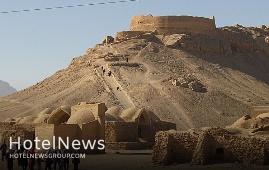
The enigmatic Zoroastrian Towers of Silence are set on two lonely, barren hilltops on the southern outskirts of Yazd in central Iran. According to a tradition dating back over 3,000 years, dead bodies were left on top of those open towers – which are also called dakhmas -- to be slowly disengaged or picked apart by desert vultures. Under ancient Zoroastrian beliefs about the purity of the Earth, dead bodies were not buried but left in these uncovered stone towers so that vultures could pick the bones clean. Narratives say that men’s corpses were placed in the outer circle, while women’s were left in the middle, and children in the inner-most ring. Bodies were then left until their bones were bleached by the elements and stripped by the vultures. After the process of purification, bones were placed in ossuaries near, or inside the towers. Ossuaries from these rituals have been discovered from the 4th and 5th centuries BC. At the foot of the hills are several other abandoned Zoroastrian buildings, including a defunct well, cistern, kitchen, and a lavatory. As Iran developed and urbanized, dakhmas became increasingly closer to city limits, severely curtailing their use. Since the 1970s, the use of dakhmas has been illegal in Iran, forcing orthodox Zoroastrians to adapt to new burial methods. According to Encyclopedia Britannica, such towers are about 25 feet (8 m) high, built of brick or stone, and contain gratings on which the corpses are exposed. After vultures have picked the bones clean, they fall into a pit below, thereby fulfilling the injunction that a corpse must not suffer contact with either fire or earth. Zoroastrian Towers of Silence are currently one of the famed travel destinations of Yazd, which is a cradle of Zoroastrianism. In July 2017, the historical texture of the city of Yazd was named a UNESCO World Heritage. Wedged between the northern Dasht-e Kavir and the southern Dasht-e Lut on a flat plain, the oasis city enjoys a very harmonious public-religious architecture that dates from different eras. With its winding lanes, a forest of badgirs (wind catchers), mud-brick houses, atmospheric alleyways, and centuries of history, Yazd is a delightful place to stay, referring to as a ‘don't miss’ destination by almost all travel associates in the region. Yazd Jameh Mosque, Dowlatabad Garden, the Yazd Atash Behram, also known as Atashkadeh-e Yazd, Towers of Silence, and adjacent desert landscape are among its tourist sites. Here is a selection of comments that visitors to the Zoroastrian Towers of Silence have posted to TripAdvisor, one of the most popular travel websites in the world: ‘Wonderful’ Should be visited to understand the ancient beliefs of Zoroastrians... This is a place where are the Zoroastrians buried their dead in the sky... (Fatih U from Izmir, Turkey) ‘Eerie’ A must site to visit if you are in Yazd to check out how the Zoroastrians dispose of their dead as they believed that after death the soulless body is impure and by burying the impure corpse in the ground, the soil becomes contaminated with impurity. (shadgerami from Nikolayevsk-on-Amur, Russia) ‘An extraordinary site’ We had planned to visit a dakhma when we toured Uzbekistan but had to give it a miss, so I was eager to visit these in Yazd. I had not realized that buildings are having a ritual function associated with the dakhma. Each family has its own building where a final funerary meal is eaten before the deceased is taken to the dakhma for excarnation. It was fascinating to walk around that part of the site before ascending the dakhma. The ascent is quite steep but aided by proper steps. Once in the main platform, there are excellent information boards in English explaining the processes undertaken. (Rod F from Royal Wootton Bassett, UK) ‘Spookily beautiful’ It is one of the most interesting sites we visited on our trip to Iran and one of the greatest reasons to add Yazd to the tour program. Totally recommended! (Muge S from Istanbul, Turkey) ‘A unique place to visit’ I can imagine how hot it must be here in the summer... we visited Yazd at Christmas time and the weather was perfect, sunny but not too hot. Climbing up to the hill makes you sweat but standing right where the corpses were left is a unique experience that catches one’s imagination. There are helpful postings in English that help you understand the context and the customs. You really can’t miss this if you visit Yazd. (Joscar00 from Stockholm, Sweden) ‘Interesting history!’ Easy walk/hike to the top. One of the towers is on a much higher level than the other. Best time to go early morning or before the sunset. (Aida B from Los Angeles) ‘Very interesting place with strong energy flow’ Don’t miss the whole story of this place as it makes it so unique and special. Going up is essential to see the whole place. Also, it gives good views around. There is very strong energy there. Going up to one of the towers is rather enough but you can choose the less popular one. This place is worth 20 min drive from the city center. (Very-sunny from Lodz, Poland) ‘A very interesting and beautiful place’ For millennia and until recently, in the 1970s, this place was used to dispose of the dead, a high priest would chop the pieces of the bodies to be fed to the birds. It is located outside the city and you can visit it on tour or by taxi. There are some temples or buildings at ground level and then you have the two hills with their sanctuaries on top. A great experience. (Etienne T. form New York) ‘Must do in Yazd’ A unique place to visit. Read a bit about the background before you come as all explanation is only in Farsi. Walk up the tower and try to imagine how the burial ceremony must have been like in those days. A must-do when in Yazd. (Isabella Deruiter form Rotterdam, the Netherlands) ‘Iconic place in Yazd with very interesting history’ This place is an essential part of the Zoroastrian religion, where the followers lay their dead loved ones' bodies at the top of the tower for the scavenging birds and weather to 'disintegrate' the bodies. The ascent to the top requires a basic level of fitness but the view of Yazd city from the top is good. I remember seeing motorbikes that bring you to the top too. (Wei T. from Singapore)
Create: Oct 13, 2021 Edit: Oct 13, 2021 Regional News
Based on the planning, each Iranian province will be granted one week to showcase its capacities at Expo 2020 Dubai, according to the managing director of Iran International Exhibitions Company. Speaking during a press conference, Hassan Zamani underlined the economic, cultural, social and political significance of the Expo, saying that some 198 countries will participate in the event. Expo 2020 in Dubai runs from October 1, 2021 until March 31, 2022. Zamani said that Iran’s pavilion at the Expo will open on October 2 with the virtual presence of the Minister of Industry, Mine and Trade. Referring to Iran’s agenda at the event, he said that Iran is firstly focused on non-oil exports which are predicted to hit $100 billion and then the country will seek to observe investments for different projects. Iran has spent the least money on designing its pavilion in comparison with other participating countries, he said, however noting that the Iranian pavilion has been selected among the top eight pavilions in the event.
Create: Oct 9, 2021 Edit: Oct 9, 2021 International News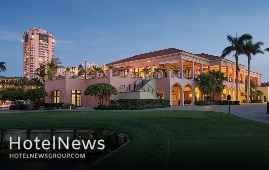
South Florida’s iconic Boca Raton Resort & Club announces the most significant evolution in its history, and its new-again name —The Boca Raton. For over four decades, from 1944 to 1988, The Boca Raton name signified a luxurious lifestyle unmatched worldwide. Over the coming months, The Boca Raton will usher in an entirely new perspective on travel, A New Golden Era. A New Golden Era at The Boca Raton and The Boca Raton Club promises an unrivaled destination beginning with a $175 million Phase One physical transformation to be unveiled during Winter 2021/2022. There will be bespoke enhancements to every guest experience, from exceptional accommodations to dynamic culinary concepts and innovative programming. The Boca Raton has a remarkable history as an internationally recognized landmark and a private escape for in-the-know travelers,” said Daniel A. Hostettler, President & CEO of The Boca Raton. “A New Golden Era will pay homage to the resort’s storied past while introducing innovative new amenities and experiences that will inspire both members and guests, and define The Boca Raton as one of the world’s most preeminent luxury resorts and private clubs.” Five Distinct Hotel Experiences, One Iconic Resort. The Boca Raton will feature a collection of five hotels located Beachside and Harborside, each with its own personality and style. Beach Club: The oceanfront luxury escape features three pools set on a private stretch of golden beach. The hotel’s new Mediterranean dining concepts, Marisol and the lobby lounge, are curated by notable lifestyle guru Colin Cowie. Bungalows: Ideal for extended stays, this three-story residential hideaway features two-bedroom suites with full kitchens and furnished terraces and balconies. Tucked in a serene corner of the property surrounded by a lush landscape, the Bungalows offer a private pool and dedicated amenities. Yacht Club: The adult-only, all-suite luxury hotel embodies refined lakefront leisure. Elegant suites feature private balconies, and views of Lake Boca Raton and its yacht-lined promenade. Personal concierges and floor valets prepare every detail for the perfect escape. Reopening Winter 2021. Cloister: Stay where it all started amidst grand architecture, lush grounds and hidden gardens as an unforgettable backdrop. Located in the heart of the action, the resort’s original structure is just steps from the 18-hole golf course, Racquet Club and spa. The Cloister is being revitalized and will reopen with immersive experiences and rotating art collections. Reopening Winter 2021. Tower: Providing elevated perspectives for sophisticated travelers, the 27-story tower is undergoing a $45 million complete transformation by Rockwell Group. With extraordinary vistas of sparkling waterways, the all new luxury hotel will introduce flexible suite configurations—two to three bedrooms—artful touches, bespoke amenities and butler service. Opening first quarter 2022. A World of Flavor. From fine dining to waterfront bites, The Boca Raton is creating one of the most exciting culinary destinations in the country, including four signature experiences with Major Food Group (MFG). The Flamingo Grill, opening this month, offers a glamorous take on the mid-century American chophouse. Forthcoming restaurants include Sadelle’s, the inventive, perennially packed brunch institution with locations in New York and Las Vegas, and all new concepts exploring Japanese and Italian cuisine. Only at The Boca Raton. This winter, the resort will unveil Harborside Pool Club, a four-acre lakefront oasis featuring luxury cabanas, four pools, 450-foot lazy river, two three-story high slides, double standing wave, retail boutique, 7,100 square foot event lawn, 5,000 square foot kids club, and a teens lounge, as well as new waterfront dining options. The Boca Raton’s 40,000 square foot wellness oasis has unveiled a new name, Spa Palmera, and new treatments. This winter, Spa Palmera will showcase a refreshed design and additional programming. New one-of-a-kind experiences include a supercar racing adventure, perfect for thrill seekers. Fashionistas may opt for a curated shopping day with a personal stylist, while couples can spend the afternoon on a private boat, complete with snorkeling and live entertainment. Resort owners MSD Partners and Northview Hotel Group are stewarding the property into its new phase with an award-winning team of builders and creators. Visionaries include architecture and design firm Rockwell Group, landscape architecture firm EDSA, branding and marketing agency King & Partners, and GarciaStromberg—a firm of architects, designers and artists.
Create: Jul 17, 2021 Edit: Jul 17, 2021 International News
Resorts World Las Vegas, the first resort built on the Las Vegas Strip in more than a decade, officially swung open its doors to the public at 11 p.m. on Thursday, June 24. The monumental launch of the highly anticipated resort included a star-studded, first-look party for invited guests earlier in the evening that featured a ceremonial ribbon cutting officiated by Genting CEO & Chairman K.T. Lim. And Resorts World Las Vegas’s President Scott Sibella. Lim and Sibella were joined by Hilton President & CEO Chris Nassetta, Nevada Governor Steve Sisolak, Clark County Commission Chair Marilyn Kirkpatrick, Clark County Commissioner Tick Segerblom and Nevada Congresswoman Dina Titus. “This is a very proud moment for Genting and our Resorts World Las Vegas family as we are honored to officially open our doors,” said Scott Sibella, President of Resorts World Las Vegas. “This spectacular resort was designed to usher in a new era of hospitality in Las Vegas with unsurpassed dining and entertainment, an array of luxury hotel accommodations, and new-age technology. We are excited to finally be able to present this resort to the world and officially welcome guests to experience our exceptional amenities firsthand. We are grateful for all of the support we received during our opening and truly hope our community and visitors enjoy all of the hard work that went into creating this incredible property.” “We are thrilled to unveil Resorts World Las Vegas – an incredible property that marks the return of our signature Hilton hospitality on the Strip,” said Chris Nassetta, President and CEO of Hilton. “Together, Hilton, Genting and Resorts World Las Vegas are committed to delivering unforgettable experiences for our guests, and this new resort raises the bar for Las Vegas. As we offer outstanding hotels, dining, entertainment and design, we are thrilled to welcome guests to the entertainment capital of the world for years to come.” The integrated luxury resort redefines the hospitality standard in Las Vegas with the following amenities: Exceptional Accommodations – Through a historic partnership with Hilton, Resorts World Las Vegas offers 3,500 luxury guest rooms and suites from three premium Hilton brands – the largest multi-brand deal in Hilton’s history – including the largest Conrad Hotels & Resorts property in the world, one of the first LXR Hotels & Resorts locations in the U.S., and a marquee Hilton Hotels & Resorts hotel. Each brand features its own entrance, lobby, and distinct selection of guest accommodations. Resorts World Las Vegas is also a part of Hilton Honors, the award-winning guest-loyalty program for Hilton’s 18 distinct brands. Las Vegas Hilton at Resorts World features 1,774 full-service guest rooms and suites ranging from 400 to 3,300 square feet with smart, elevated amenities in a comfortable and refined setting. Conrad Las Vegas at Resorts World offers 1,496 contemporary and luxury guest rooms and suites ranging from 550 to 2,800 square feet, boasting luxe amenities and a curated art program. Crockfords Las Vegas, LXR Hotels & Resorts showcases an intimate collection of 236 impeccably designed guest rooms, suites, and villas ranging from 550 to 7,000 square feet that feature lavish accommodations, upscale amenities, and highly personalized service. Technology – Resorts World Las Vegas offers various new-age technology advancements across the property, including mobile check-in and digital key via the Hilton Honors app, allowing for a contactless arrival experience, an AI-powered digital concierge named Red, and more. The resort also boasts over 200,000 square feet of captivating LED displays, including a 100,000 square-foot West Tower LED screen (one of the largest LED building displays in the U.S.). The first resort to partner with Grubhub, Resorts World Las Vegas guests can exclusively enjoy Grubhub’s advanced ordering technology through On The Fly at Resorts World powered by Grubhub. This innovative solution allows guests to conveniently order and charge the cost to their room or credit card via the Grubhub app from the resort’s 40 food and beverage concepts and select retail shops for pickup or delivery. Guests can send orders to their rooms as well to the resort’s 5.5-acre pool complex. Casino – Resorts World Las Vegas features an unrivaled gaming experience with the most innovative casino technology. With 117,000 square feet of gaming space including 1,400 slots, 117 table games, a dedicated Poker room and 30 poker tables, high-limit areas, and a sportsbook, the next-generation casino will redefine the traditional gaming experience by introducing the most technologically advanced casino and gaming operation within one integrated resort with Cashless Wagering, RFID bet tracking, and Ticket-in-Ticket out (TITO) at the table. Through the Resorts World Las Vegas Mobile app, guests can pay for gaming, entertainment, or hotel offerings from the palm of their hand, and check their Genting Rewards account balances, receive offers, and rewards and stay connected to the array of amenities. Resorts World Las Vegas will also be the first Las Vegas casino where consumers can utilize a digital login and cashless wagering experience at both slots and table games. Dining – Guests can choose from over 40 food and beverage options at Resorts World Las Vegas, ranging from fine-dining and quick-service venues to original and exclusive concepts like Kusa Nori, Genting Palace, Sun’s Out Buns Out, Famous Foods Street Eats, Wally’s Wine & Spirits, and Craig’s Vegan. Entertainment – The resort’s 5,000-capacity concert and entertainment venue is outfitted to host a myriad of affairs – from star-studded concerts to convention, corporate and sporting events. Featuring the largest and tallest performance stage with the furthest seat only 150 feet from the stage, the brand-new, multi-level venue will provide an intimate, high-energy experience with unparalleled comfort, unobstructed sightlines, and an unmatched immersive audio experience. The joint development between Resorts World Las Vegas and AEG Presents will be exclusively programmed and operated by Concerts West and is set to introduce the next wave of superstar entertainment partners with exclusive engagements by Celine Dion, Carrie Underwood, Katy Perry, and Luke Bryan beginning this November. Retail – With approximately 70,000 square feet of dedicated retail space named The District, Resorts World Las Vegas presents two levels of unique boutique shops and experiential offerings from luxury and lifestyle brands, including Fred Segal, Judith Leiber, Hervé Léger, and Pepper. Nightlife – In partnership with Zouk Group, Singapore’s leading lifestyle and entertainment company, the resort features a multiplicity of experiences in one entertainment complex, including Zouk Nightclub and Ayu Dayclub featuring can’t-miss performances by resident DJs Tiësto and Zedd, in addition to a diverse lineup of talent featuring an unprecedented number of female artists including Becky G, Madison Beer, Charly Jordan, and Madds. Meetings – In addition to 250,000 square feet of flexible meeting and banquet space complete with 50 multi-functional meeting rooms, Resorts World Las Vegas will debut the first connector station to the Las Vegas Convention Center (LVCC) and Vegas Loop via an innovative underground transportation system later this summer, providing convention-goers a rapid transportation solution between the resort and the LVCC via all-electric vehicles in minutes. Pool and Spa – The resort offers additional amenities, including an expansive 5.5-acre pool complex featuring five unique pool experiences, including the only infinity-edge pool on the Strip, Additionally, the resort will debutea spectacular 27,000-square-foot, world-class spa experience, which will open later this summer.
Create: Jul 1, 2021 Edit: Jul 1, 2021 International News
